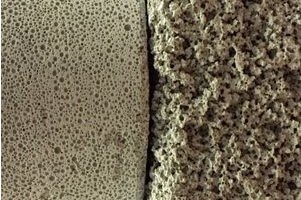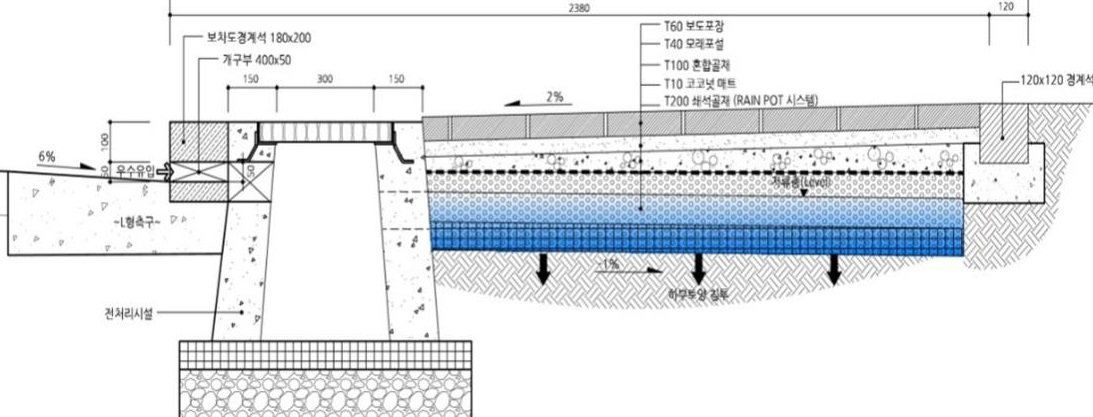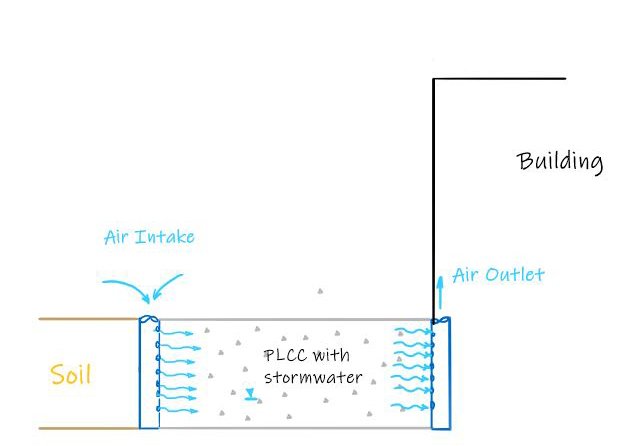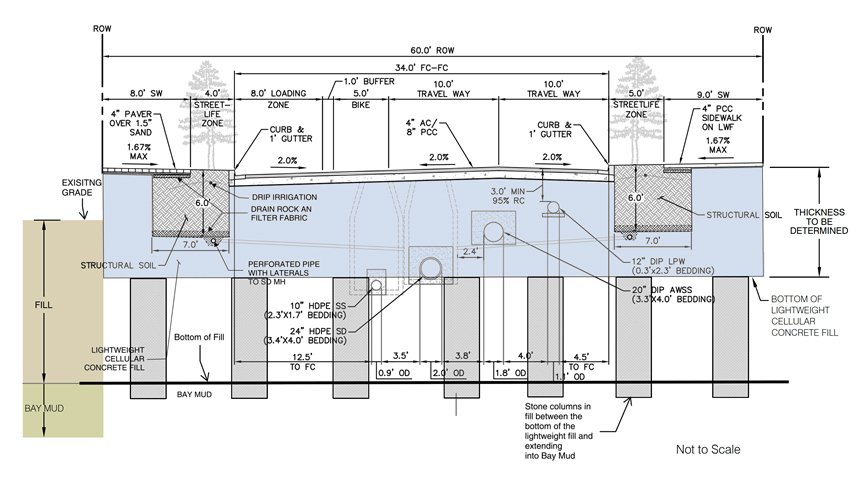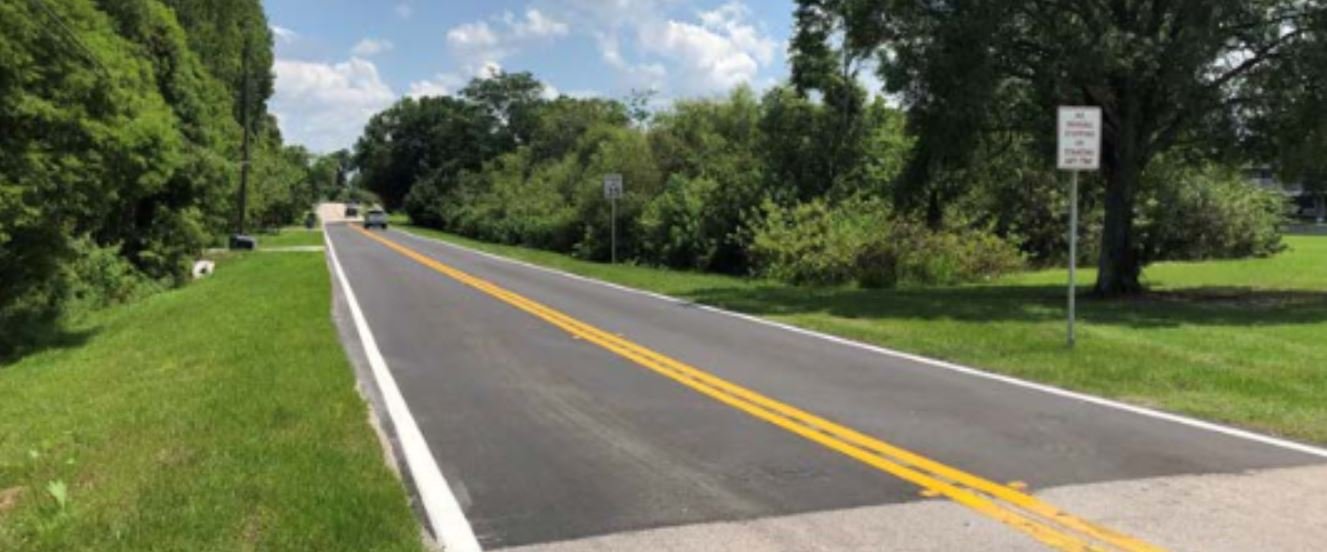Lightweight Technologies
Comparison of the fabric of closed-cell lightweight cellular concrete LCC (left) and open-cell permeable cellular concrete PLCC (right).
SGA has 25 years of experience in research, development, design, and construction of green infrastructure. We have assisted in the development and implementation of these technologies in North America, China, Taiwan, the Republic of Korea, the Philippines, Norway, Turkey, Saudi Arabia, India, and South Africa.
Green and smart infrastructure benefits society’s wellness and improves the sustainability and resiliency of 21st-century communities. SGA is an innovator in the strategic development and application of lightweight materials, e.g., lightweight cellular concrete (LCC), permeable lightweight cellular concrete (PLCC), and expanded polystyrene (EPS geofoam) for green infrastructure. These include
Installation of lightweight cellular concrete (Mission Rock Project, Port of San Francisco
Installation of EPS geofoam block (unknown location)
Climate Change Adaptation and Sustainability
Energy-efficient building systems using PLCC and EPS
Underground water storage and retention using PLCC
Stormwater management systems to prevent urban flooding using LCC and PLCC
Coastal and soft ground reclamation using LCC, PLCC, and EPS
CO2 utilization using PLCC
Landscaping and Recreational Infrastructure
Green roofs using EPS and PLCC
Parks and plazas using LCC, PLCC, and EPS
Geotechnical and Seismic Resiliency
Accelerated bridge, roadway, retaining wall, and embankment construction using LCC and EPS
Seismic resiliency of pipelines, utilities, and unreinforced masonry buildings using EPS
Energy upgrades to unreinforced masonry buildings using EPS
Technology Spotlight - Urban Flood Prevention and Stormwater Management
Sponge City Concept - Improve local infiltration (courtesy of LH)
SGA, with its partners, is developing stormwater infiltration systems that prevent urban flooding from climate change-induced extreme events. Flooding from extreme events is the natural hazard with the greatest economic and social impact in the United States. Catastrophic flooding from recent hurricanes, including Superstorm Sandy in New York (2012) and Hurricane Harvey in Houston (2017), caused billions of dollars in property damage, adversely affected millions of people, and damaged the economic well-being of these communities. Unfortunately, other major metropolitan areas will be impacted by severe flooding events caused by heavy rain, high tides, or swollen rivers.
Methods reducing urban flooding (courtesy of LH)
The potential for urban flooding has caused communities to make a paradigm shift that includes decentralized rainwater and stormwater management. Some cities are initiating low-impact development (LID) or a "sponge city.” The sponge city philosophy encourages better land planning and technology innovations that integrate the urban water cycle, including stormwater, groundwater, and wastewater management, into urban design to minimize environmental degradation and improve the aesthetic and recreational appeal. In this concept, an urban area is designed and constructed to cope with excess rainfall by absorbing, retaining, or channeling runoff. The reduction of hard surfaces and increasing the use of absorbent materials and green space can reduce the frequency and intensity of flooding events.
Detail of a stormwater infiltration (blue) using PLCC as a buried infiltration basin (courtesy of LH)
The PLCC technology could be used in
Building foundations
Roadways, sidewalks, and transportation infrastructure
Other underground and above-ground land basins (e.g., parks and parking lots)
Rooftop green spaces
Below-ground cisterns for storing rainwater.
Filtration and capture of pollutants (e.g., heavy metals, etc.)
Technology Spotlight - PLCC Filtering of Particulate Matter
Gwanghwamun Square in Seoul, Korea shrouded in fine dust (Photo courtesy of Korea Herald - Nov. 20th 2021).
Particulate matter (PM) air pollution poses a serious health threat to human health and the environment. It affects public welfare in many such as decreasing visibility, direct and indirect radiative forcing, and damage to ecosystems. PM is a mixture of extremely small particles and is categorized by PM2.5 and PM10 (i.e., particle sizes below 2.5 and 10 μm, respectively). PM2.5 pollution is particularly harmful to humans because its small particle size can penetrate and lodge in our lungs. Long-term PM2.5 exposure increases morbidity and mortality.
Conceptual sketch of using PLCC as an underground filter basin to remove particles for HVAC systems.
Korea Land and Housing Corporation (LH) and SGA is developing PLCC as an “underground filter basin to trap PM 2.5 and PM 10 as part of the Korean Ministry of Environments efforts to address this serious issue. Porous materials, such as PLCC, with their large pore volume, can provide spatial confinement to trap small size PM.
In addition, PLCC partially saturated with water might be more efficient than dry PLCC alone in trapping particulates. Further, periodic flooding or water influx of the PLCC by stormwater might provide a mechanism to periodically flush trapped particulates from the system.
Technology Spotlight - Stormwater Harvesting and Underground Storage
Stormwater harvesting and use system (from State of Minnesota Stormwater Manual)
Stormwater harvesting and use systems can improve or maintain watershed hydrology, reduce pollutant loading to receiving waters, increase water conservation, reduce stress on existing infrastructure, and reduce energy consumption. These systems may have four primary components: (1) collection system, (2) storage unit, (3) treatment system, and (4) distribution system. PLCC, because of its high water storage capacity, could be used as the primary storage component of a stormwater harvesting and use system. For example, the creation of PLCC storage unit under building floor slabs could be a convenient place to store stormwater, especially in space-constricted residential or urban properties that do not have sufficient room for conventional retention systems. PLCC, due to its high porosity and permeability) is capable of providing between 40 to 50 percent water storage (by volume) (i.e., 0.4 to 0.5 cubic meters of water storage for a 1-m thick layer of PLCC).
Conceptual storage unit for stormwater storage under the basal floor slab of modular, multi-story building using PLCC
Beneficial uses of stormwater include any use of water to meet individual or societal water needs, including but not limited to: irrigation, drinking, washing, bathing, cooling, and flushing. Outdoor uses include irrigation, water features, sanitary sewer flushing, street cleaning/dust control, vehicle/building washing, firefighting, recharge, and ornamental and recreational wetlands. Indoor uses are more likely to require a constant supply of water and therefore require a backup water supply. Indoor uses provide an opportunity to maximize the cycling of water on-site since greywater from beneficial uses of stormwater supplied with harvested water can be captured for additional beneficial use. Water quality requirements for stormwater storage systems are context-specific, and treatment may vary depending on source water quality. These treatment requirements can be addressed by incorporating appropriate treatment components into the stormwater harvesting and use system.
Technology Spotlight - Improving Building Energy Efficiency Using a PLCC Ground-Coupled Heat Exchanger
Precooling of intake air to building system using lightweight permeable cellular concrete
Subterranean basins of PLCC and stormwater retention could be combined to create a precooling/preheating of intake air to HVAC systems. The PLCC can act as part of a ground-coupled heat exchanger that captures or exchanges heat prior to being drawn into an HVAC system. Intake air can come in contact with the very porous and partially saturated PLCC to accomplish the heat exchange.
For example, PLCC has been used in a building complex in New Orleans, Louisiana to detain surface runoff water under the basement floor of the building. The construction (see photo) was overseen by a New Orleans-based general contractor. The building is pile-supported and a PLCC detention basin was dug out from the soft compressible subgrade soils. The exterior perimeter of this basin was lined with a 40-mil geomembrane and filled with PLCC to create an underground detention basin. Drainage pipes within the area were wrapped with a high-flow silt fabric to prevent plugging.
Placement of PLCC underneath a building for underground detention of storm water runoff, New Orleans, Louisiana (photo courtesy of Aerix Industries).
SGA believes the combined function of underground storage of stormwater runoff with ground-coupled heat exchange is possible as an underlayment system for buildings, car-park roofs, plazas, etc. The system used in New Orleans could be modified to create a ground-coupled heat exchanger. In addition, as air is actively drawn through the PLCC, some uptake of CO2 in the intake air will occur as the airflow reacts with the very porous PLCC. The carbon will be stored in the matrix of the PLCC basin as a stable carbonate. The resulting CO2 utilization is beneficial to PLCC because it increases the long-term strength and durability of lightweight concrete. SGA believes this technology could be scaled and applied to a wide range of buildings (i.e., from high rise to single-unit dwellings).
Technology Spotlight - Adapting and Reclaiming Coastal Areas Undergoing Sea Level Change
Mission Rock Project, Port of San Francisco, California
Sea level rise with its associated impacts on infrastructure is one of the 21st century’s greatest challenges. Adaptation strategies to protect existing and new infrastructure include increasing the land elevation in existing and reclaimed areas and building flood barriers and drainage systems to protect infrastructure.
Increasing Land Elevation and Land Reclamation
Cross-section of Mission Rock Street. Lightweight cellular concrete is shown in blue.
Flooding of West Lake Eloise Drive, Florida (Photo courtesy of Aerix Industries)
Developing areas can use LCC and PLCC to raise the elevation of land and infrastructure in flood-prone areas. For example, SGA was part of a technical advisory panel assisting the City and Port of San Francisco in developing LCC and PLCC as the primary strategy that allowed for the construction of the Mission Rock Project in the Port of San Francisco (mission-rock). This project is placing LCC to create a 5-foot elevation change across the development to combat future effects of coastal flooding.
Strategies include relocating roads, utilities such as water treatment plants, and pump stations, to higher elevations, to reduce the risks from coastal flooding and exposure as a result of coastal erosion or wetland loss. For example, West Lake Eloise Drive in Winter Haven, Florida, underwent repetitive flooding. Polk County concluded that the roadway needed elevating to prevent further flooding. PLCC was used to raise the roadway and address issues associated with settlement and a high water table.
Building Flood Barriers and Drainage Systems
Raising and Reconstruction of West Lake Eloise Drive, Florida (Photo courtesy of Aerix Industries)
Conceptual drawing of proposed Songdo Bypass Highway
Images of seawalk and landscaping possibilities using lightweight materials
LCC and PLCC can be used to construct flood barriers, transportation, and drainage systems to protect critical infrastructure including levees, dikes, and seawalls. A related strategy is floodproofing, which involves elevating critical equipment or placing it within waterproof containers or foundation systems. An example of this is the Songdo By-Pass in Incheon Korea. SGA has offered a conceptual design of how lightweight material could be used to construct the highway using green infrastructure principles and features that include a seawalk and adjacent park area (Songdo seawalk and park). In a meeting with Korean Transportation Officials, the engineering and urban ecology faculty of the University of Utah Asia Campus (located in Songdo, Incheon) proposed more green and environmentally friendly alternatives. These included moving the alignment to parallel the existing sea wall as an enclosed highway. We also proposed that a sea walk/seaside park be created on the roof and side slopes of the enclosed highway for recreation. These recommendations appear to have gained popularity in the Songdo community. In addition to evaluating questions about cost reduction, safe traffic operations, and efficiency, green transportation projects should explore: (1) How might the transportation project protect or enhance the environment? (2) What steps are needed to conserve energy and natural resources? (3) How might the project improve the scenic and aesthetics of the area? (4) How can the project encourage and incorporate public input? (5) Has growth and sound land-use practices been adopted, including principles of green infrastructure and multiuser benefits? (6) What considerations have been taken to encourage sustainability in the operation and maintenance of the transportation facilities? (NYDOT Greenlites)
Technology Spotlight - Accelerated Construction of Transporation Infrastructure on Reclaimed and Soft Ground
Construction of LCC approach embankment for Colton Crossing bridge
SGA is developing lightweight embankment technologies that use non-earthen materials (e.g., low-density cellular concrete (LCC), expanded polystyrene (EPS) geofoam) to support lightweight, modular bridge, roadway, and rail systems without the need of installing deep foundation systems.
Conventional methods for supporting bridges involve constructing deep foundations (e.g., piles, shaft, piers) into the ground to support the steel or concrete foundations, and moving any utility lines that are in conflict with the new infrastructure. On soft ground (e.g., coastal areas, reclaimed ground, marshes, etc.), conventional construction methods require many safeguards to prevent settlement damage to the bridge from construction and long-term soil settlement.
Construction of EPS bridge support system, Lokkeberg Bridge, Norway
Fortunately, the extremely lightweight nature of LCC, PLCC, and EPS allows for rapid embankment construction atop soft soil conditions (e.g., coastal areas, reclaimed ground, marsh, and peaty soils) without causing damaging settlement to the deep foundations, bridge structure, and approach pavements. The lightweight embankment technology is well-developed for such applications. However, the application of directly supporting bridge structures (i.e., placing the bridge foundation support directly on the lightweight material without the use of deep foundations) is still developing. SGA holds a patent for accelerated construction of bridge support systems US20180209106A1. We are pioneering this type of construction in the U.S. and Europe in partnership with the Norwegian Public Roads Administration.
Technology Spotlight - Green Roofs and Parks
Rendering of green roof of the Lucas Museum of Narrative Arts, Los Angeles, California.
SGA assisted Stantec and Lera with the design of the green roof for the Lucas Museum of Narrative Arts (LMNA) in Los Angeles, California. SGA performed the seismic stability calculations for the EPS geofoam used on this roof system.
Disney Shanghai Theme Park - Shanghai, China
In addition, SGA was a senior reviewer for the Walt Disney Corporation for the design and construction of terraces and plazas used in the Disney Shanghai theme park. These plazas and terraces made extensive use of lightweight materials to eliminate consolidation settlement of these landscaped features.
Technology Spotlight - Protection of Buried Utilities and Pipelines
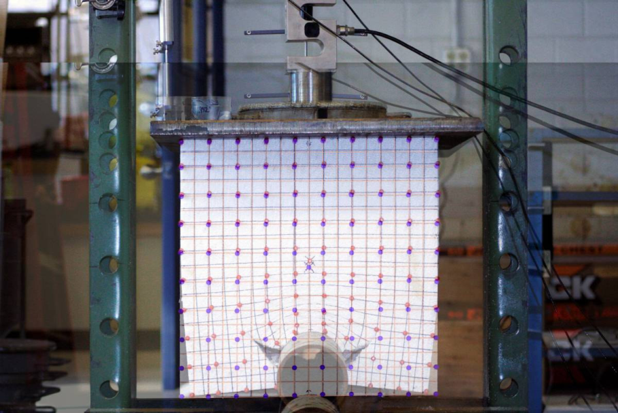

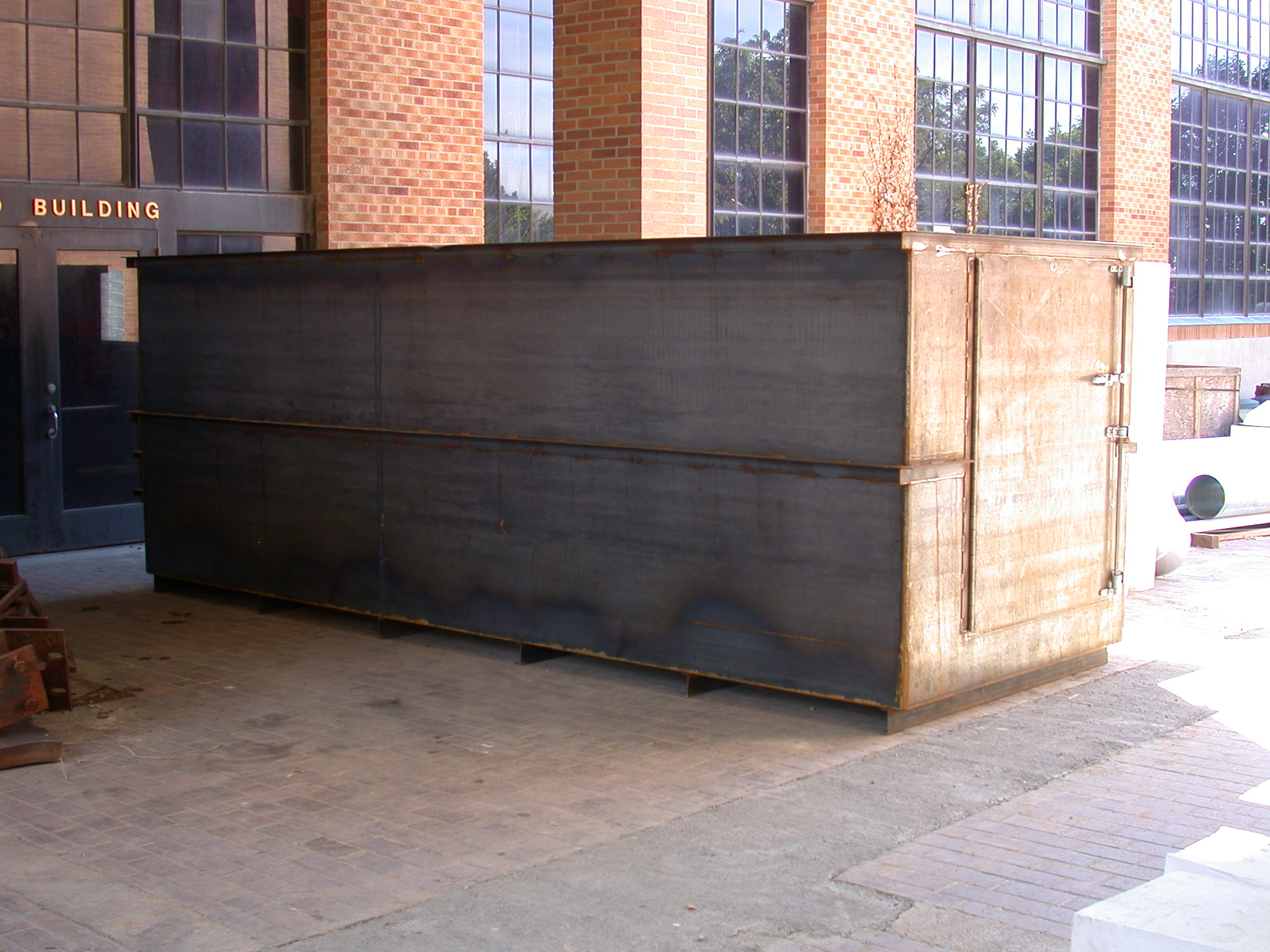
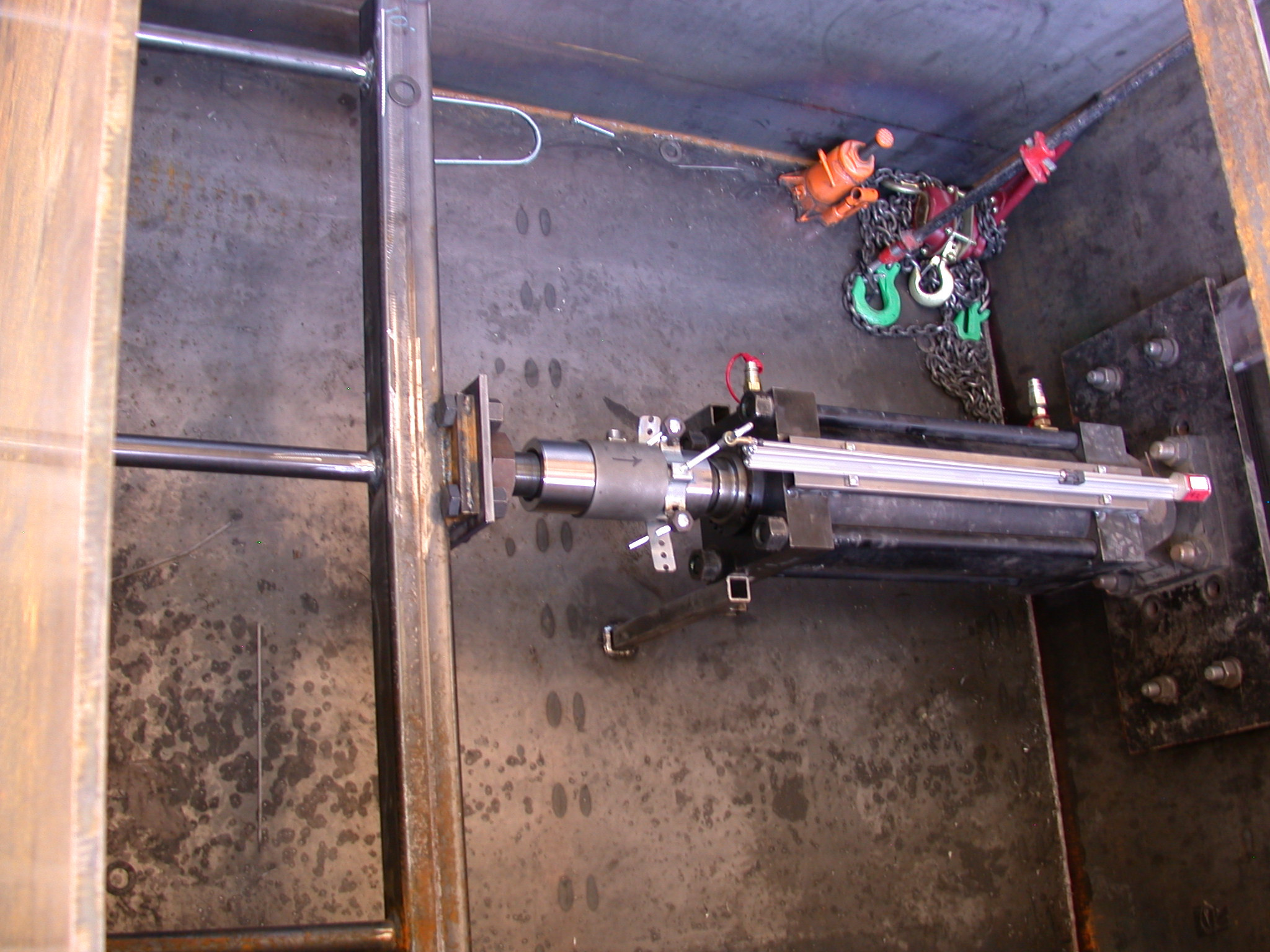
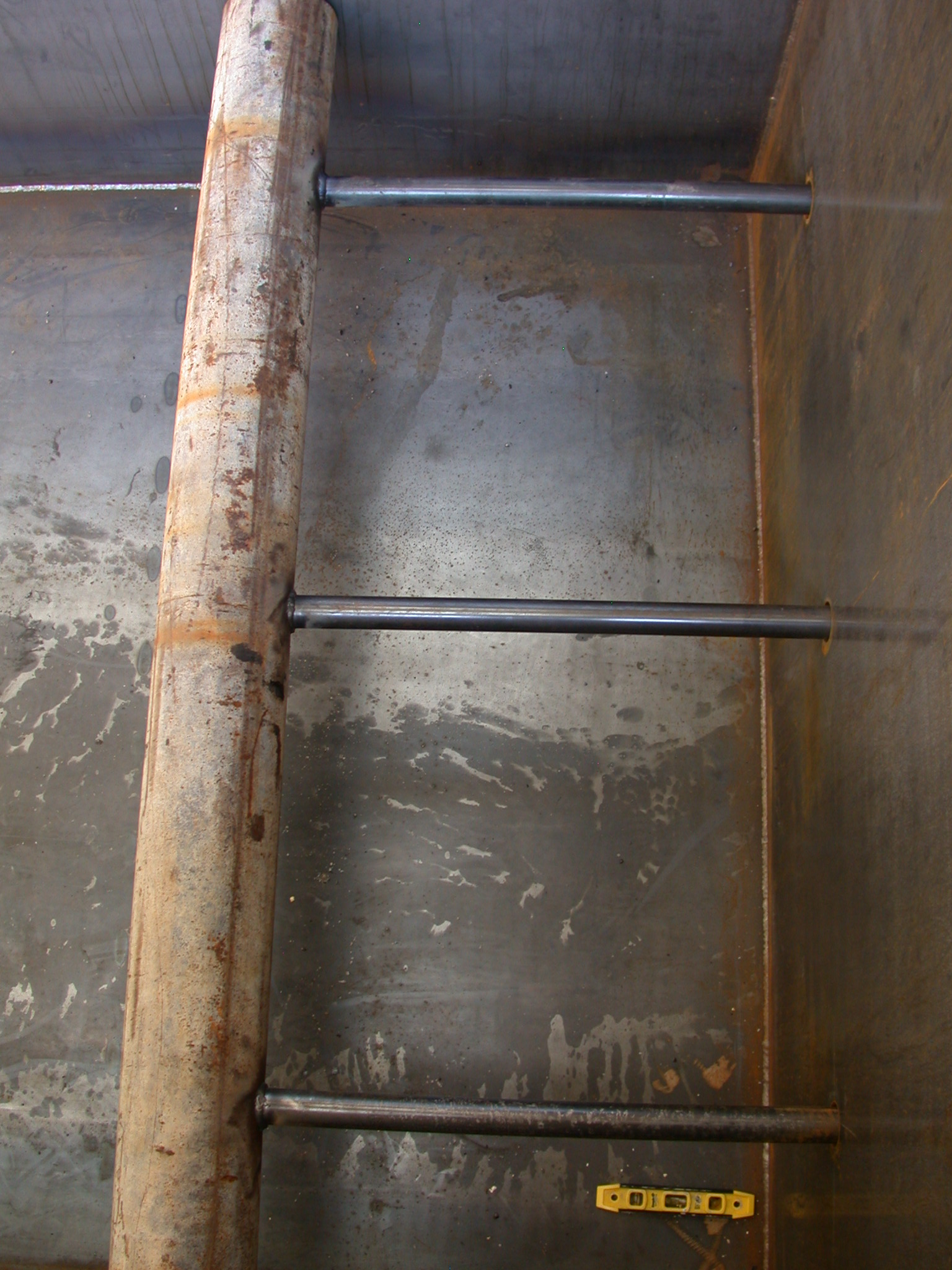

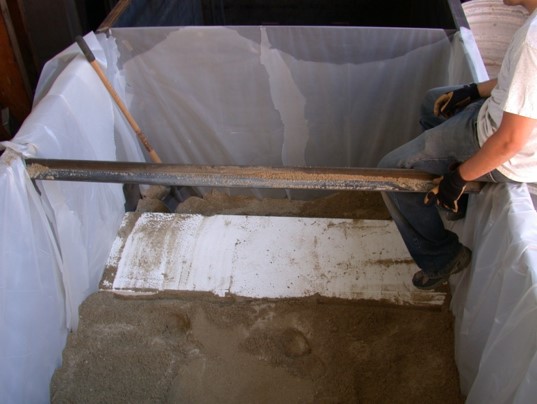




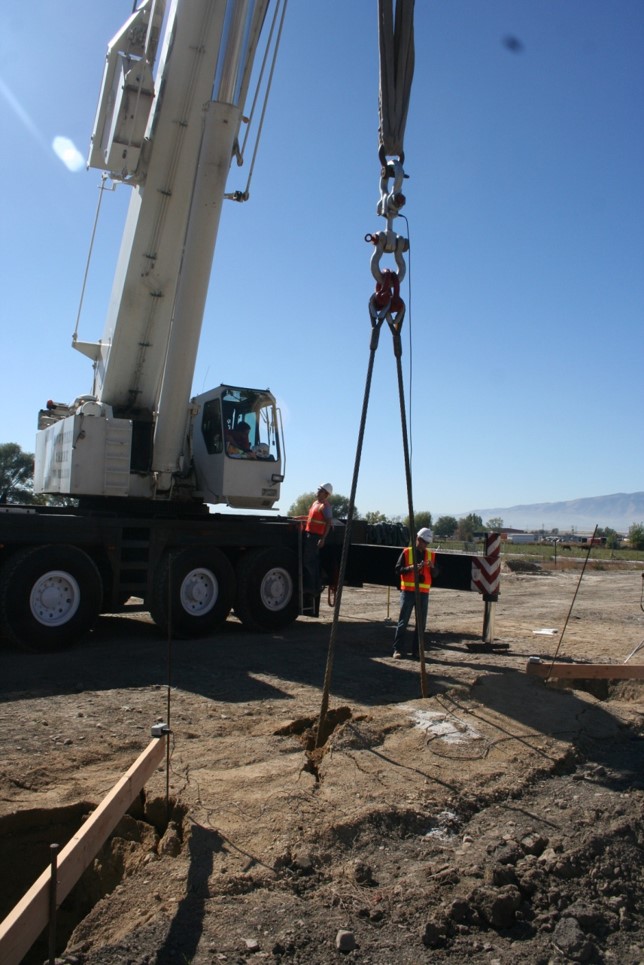




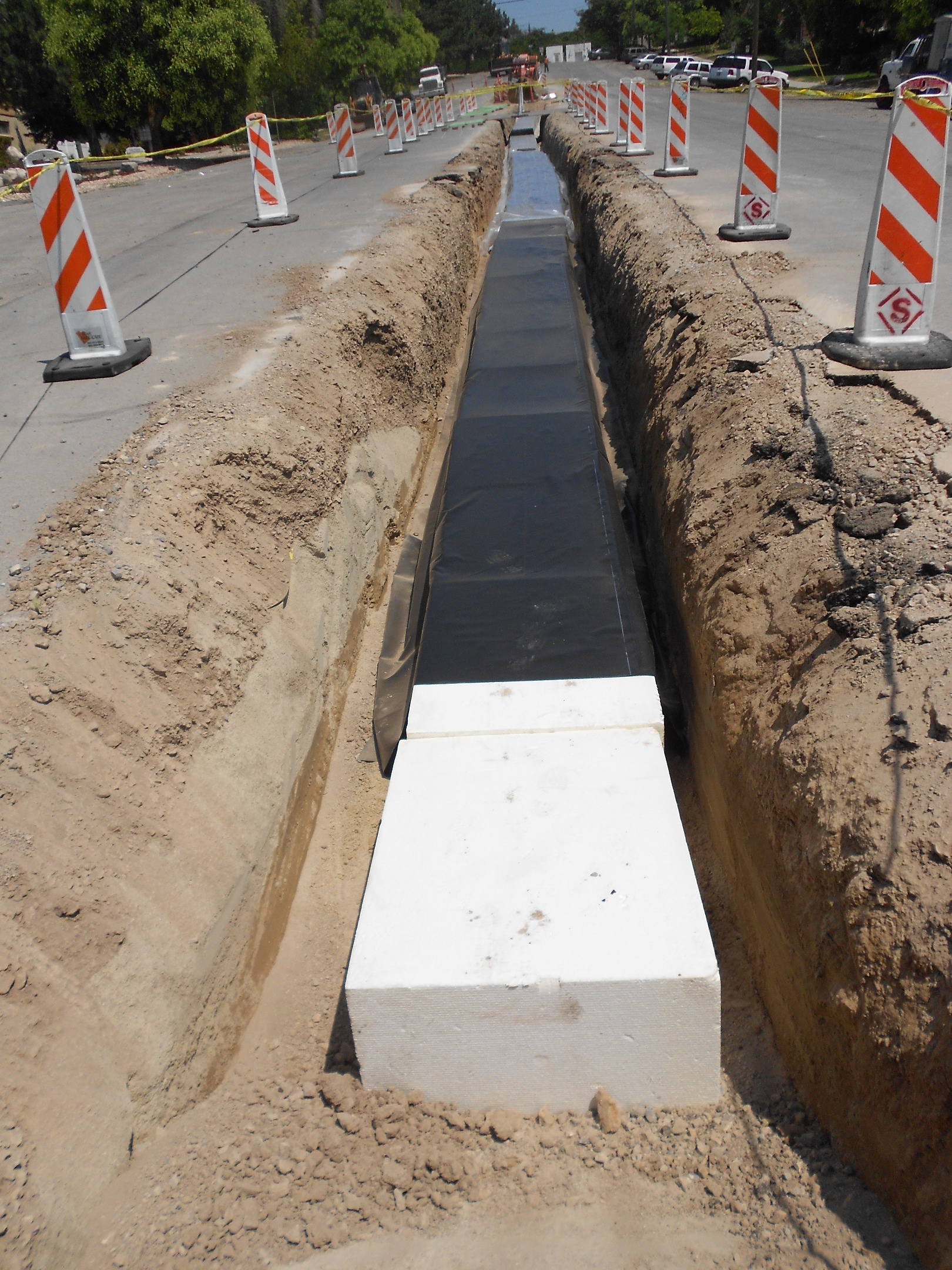

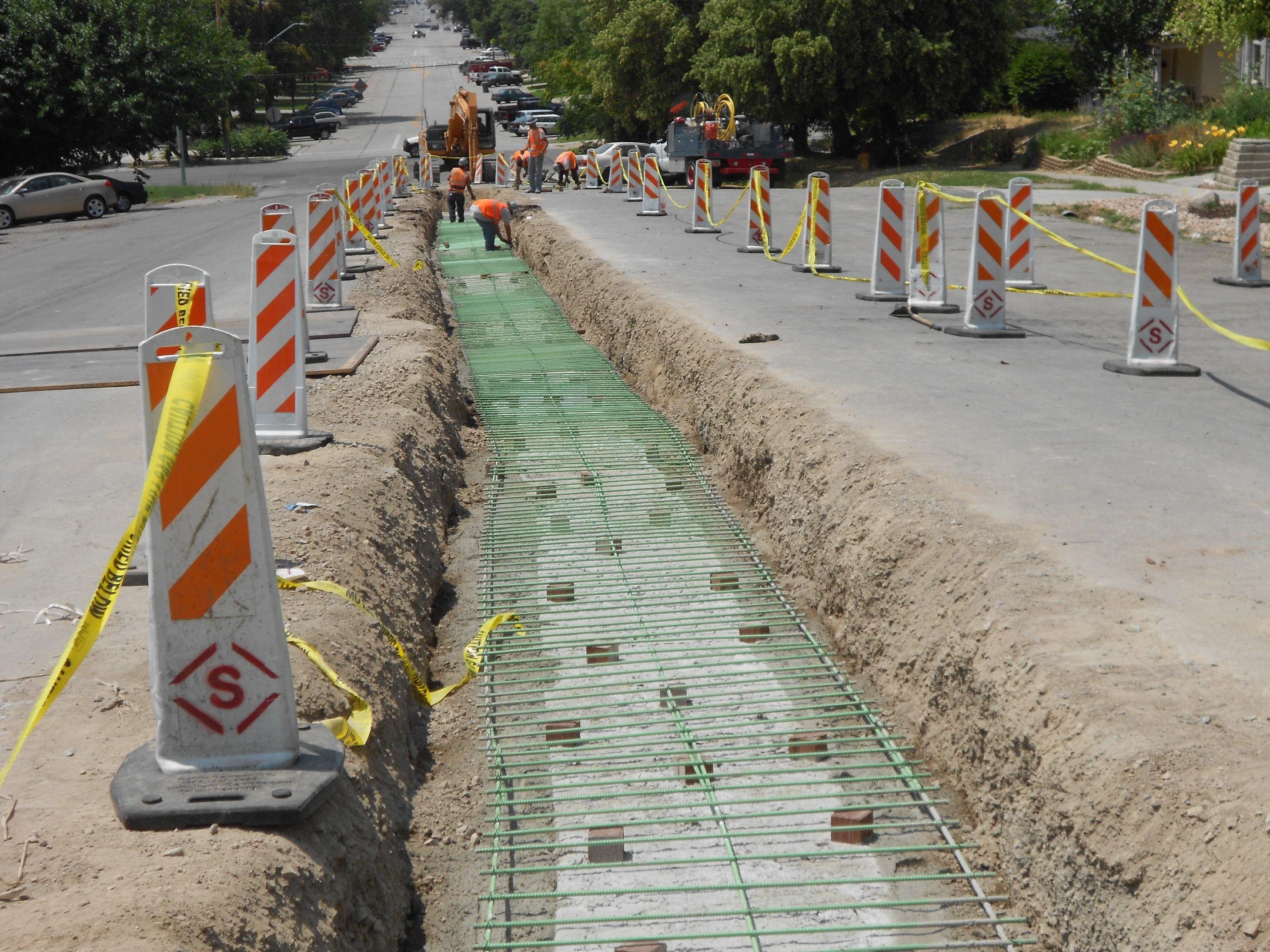



Lightweight, compressible materials (e.g., cellular concrete and expanded polystyrene) can be used to protect buried infrastructure. SGA has evaluated the seismic design and construction of lightweight materials to improve the seismic resiliency of pipelines and buried structures from potential rupture caused by permanent ground deformation (e.g., tectonic faulting, subsidence, liquefaction, land sliding, etc.). Full-scale experiments, numerical modeling, and construction projects show that lightweight cover systems offer significant benefits for protecting buried pipelines from potential damaging movements.
Technology Spotlight - Retrofitting of Unreinforced Masonry Buildings
Use of structural insulated panel (SIP) to retrofit unreinforced masonry (URM) wall.
Unreinforced Masonry (URM) buildings can fail and collapse during major earthquakes because of deficiencies in the strength of the walls when loaded in-plane or out-of-plane or due to inadequate wall diaphragms or diaphragm-wall connections.
Detail of anchorage of SIP to concrete foundation system
SGA is developing ways of improving the seismic resiliency and energy efficiency of 1 to 2-story URM buildings. The primary goal is to provide a new life or significantly increase the service life of seismically and thermally substandard structures. This development focuses on the interrelated issues of improving resiliency and energy efficiency in a holistic, integrated approach. The primary goals are to (1) advance a new method for seismic retrofitting or rehabilitation of unreinforced masonry structures based on the use of structural insulated panels (SIPs) deployed as a composite wall system integrated with the URM wall, (2) use measurement science to identify and quantify energy consumption efficiencies gained by the improved thermal insulation envelope provided by SIPs, and (3) estimate the improved building performance, increased service life and life cycle cost achieved by implementing the proposed retrofit strategy when compared with an unretrofitted URM.


